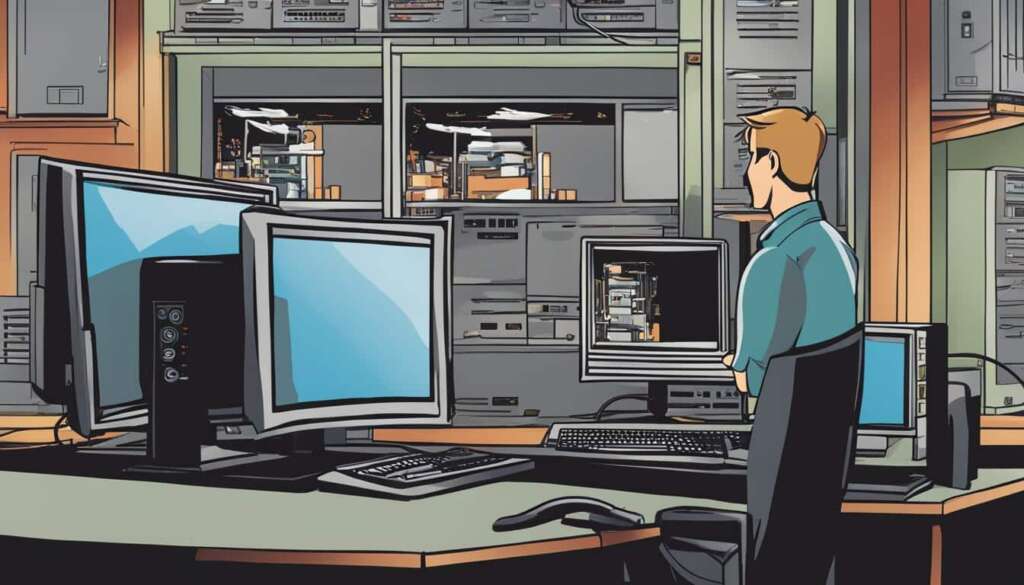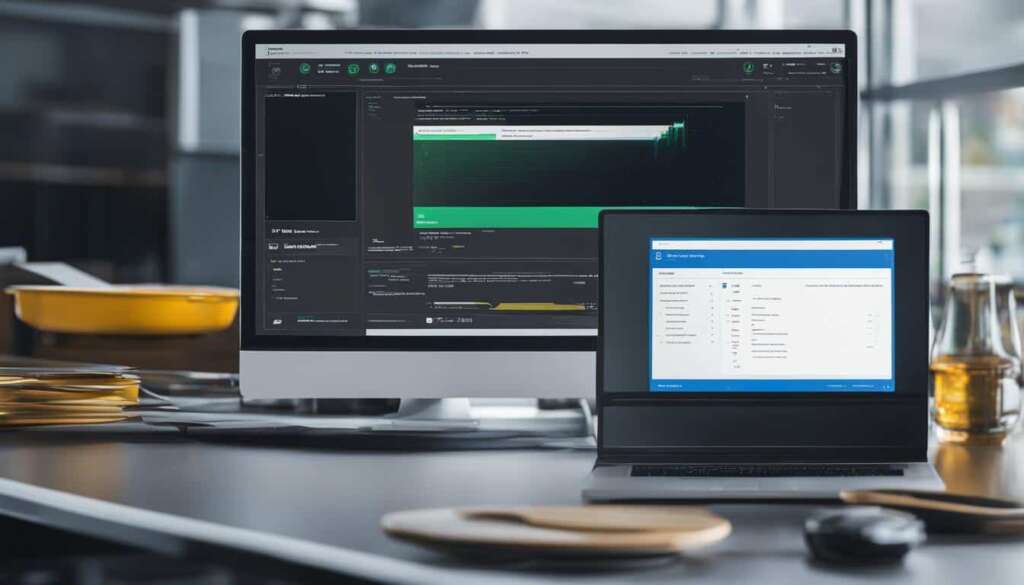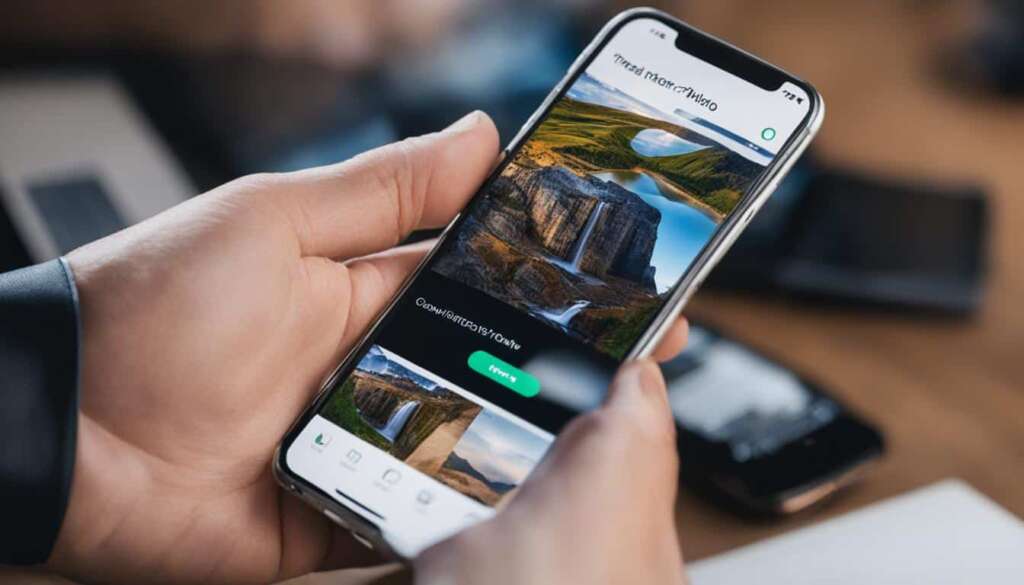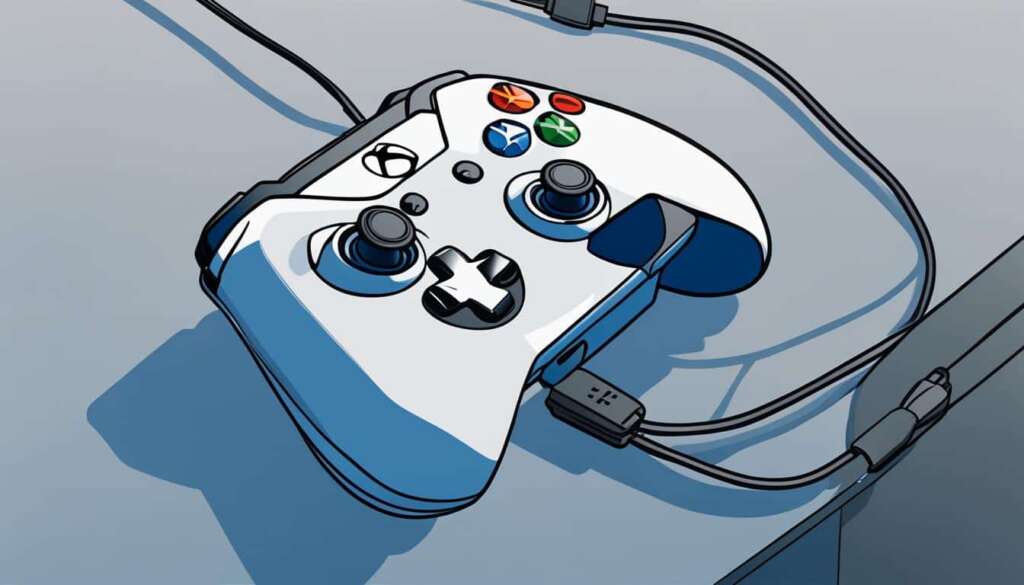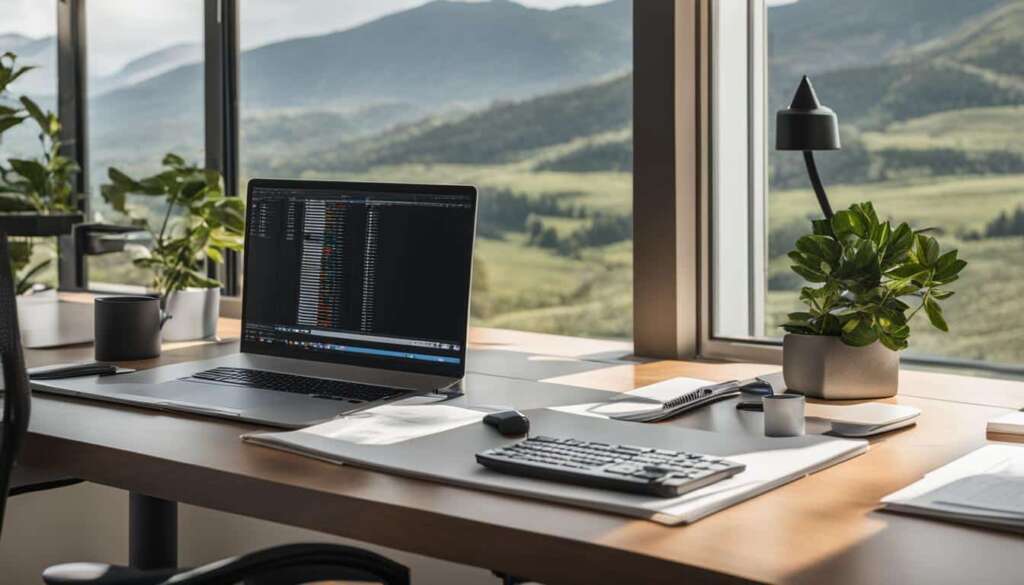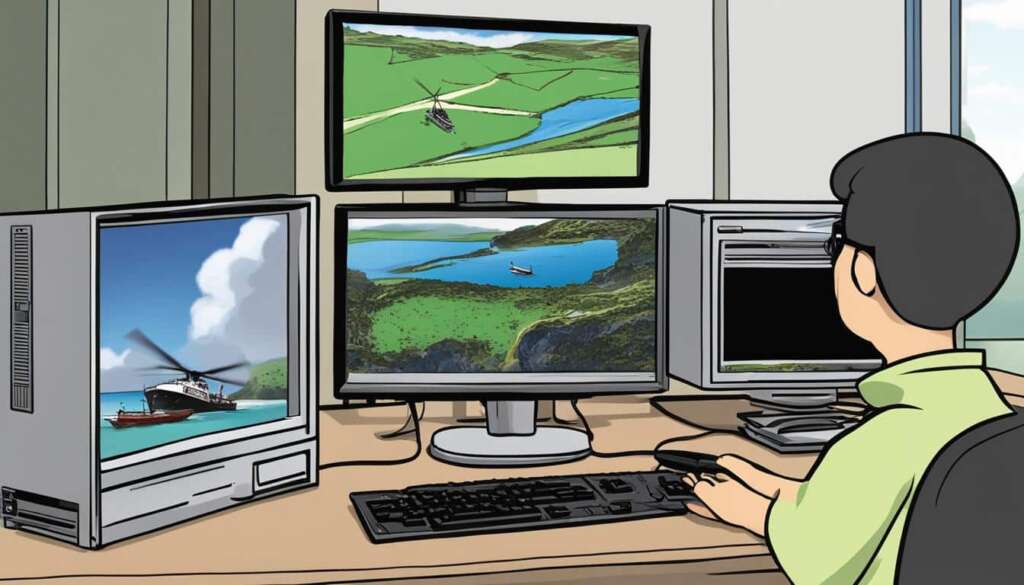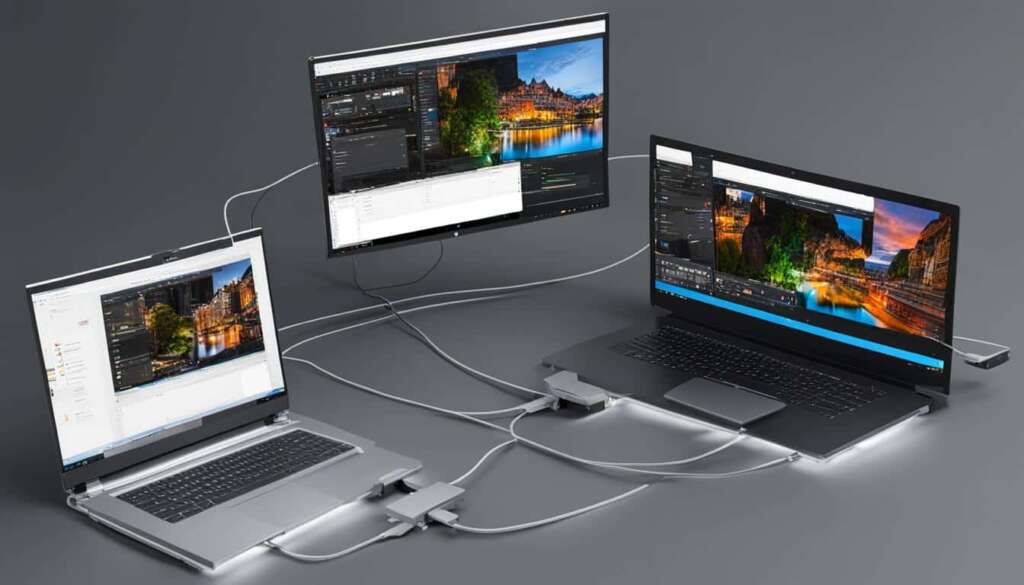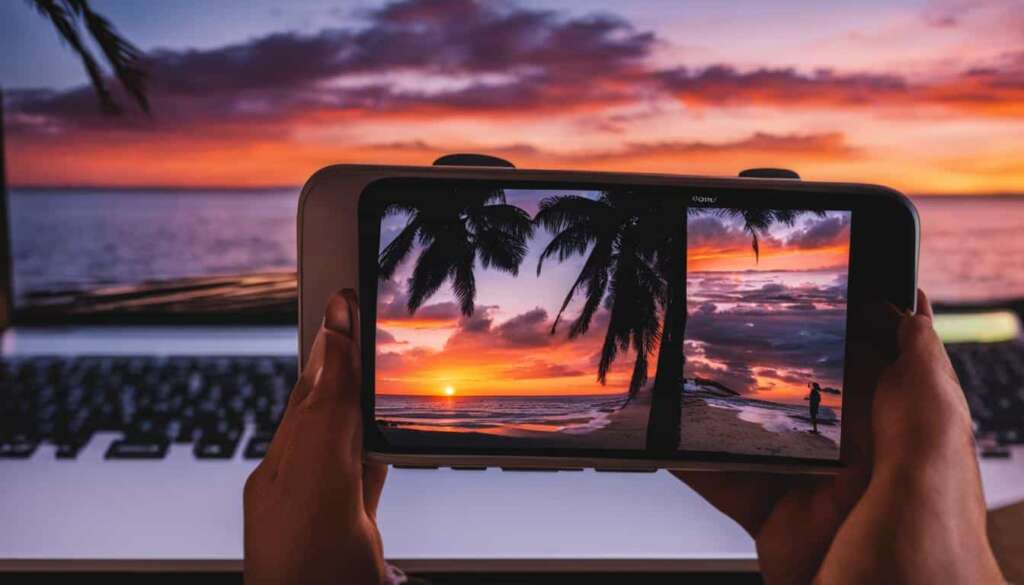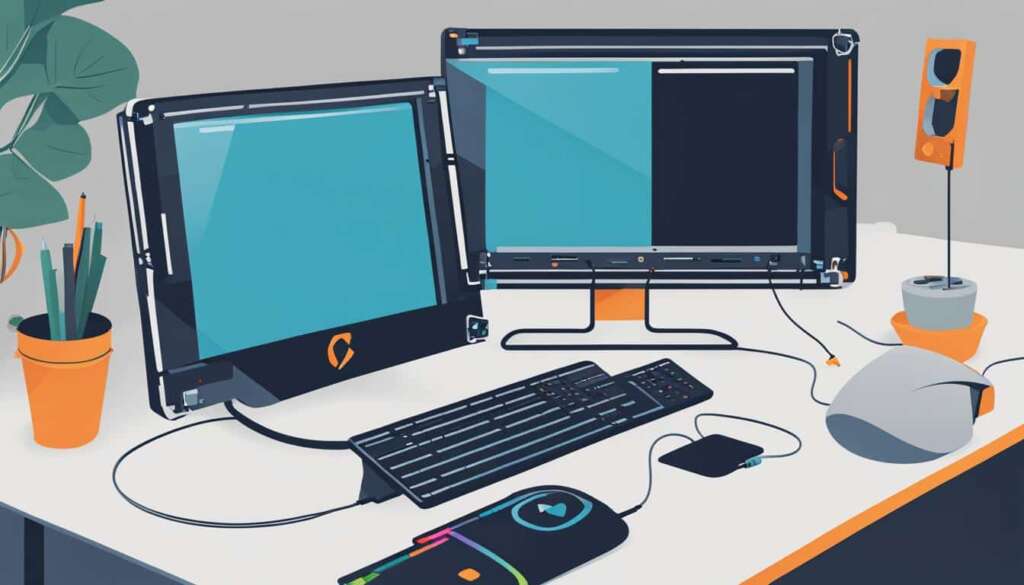Table of Contents
If you’re experiencing difficulties with your PC not connecting to your monitor, don’t worry. This is a common issue that can be easily resolved with some troubleshooting steps. There are a few possible reasons why your PC may not be recognizing your monitor, such as a software glitch, unplugged cable, or a driver problem. By following the steps below, you can identify and fix the problem.
Check the Connection and Ports
If your PC is not connecting to your monitor, the first step is to check the physical connection and ports. This simple troubleshooting process can help identify and resolve the issue quickly. Follow the steps below to ensure a proper connection:
- Inspect the cable connections: Ensure that the cable connecting your monitor to your PC is securely plugged in at both ends. Check for any loose or damaged cables that may be hindering the connection.
- Verify the correct port: Double-check that your monitor is connected to the correct port on your PC. Depending on the type of cable you are using (HDMI or DisplayPort), make sure it is plugged into the appropriate port on your PC.
- Avoid using the wrong port on your PC: If you have a PC with a dedicated graphics card, it is crucial to connect your monitor to the ports on the graphics card itself, rather than the ones on the motherboard. This is because the dedicated GPU often overrides the integrated GPU on the motherboard. Connecting your monitor to the wrong port may result in your PC not recognizing it.
By thoroughly checking the connection and using the correct ports, you can eliminate connection-related issues and increase the chances of successful monitor recognition.
Example:
“I was having trouble connecting my PC to my monitor, and I couldn’t figure out what was wrong. Then I realized that I had mistakenly plugged my monitor into the wrong port on my PC. Once I connected it to the right port, everything worked perfectly!”
Adjust Display Settings
If you’ve verified the physical connections are correct but still no display, the next step is to adjust the display settings in Windows. Right-click on your desktop and choose “Display settings.
In the display settings, you should see all the connected monitors. If you don’t see the monitor you’re trying to connect, try unplugging and replugging it again. If you do see it, but there’s still no display, you can try pressing the Win+P key combination to bring up the display options menu.
From there, you can select “mirror” or “extend” to configure how your PC should act when using multiple monitors. Alternatively, you can also adjust these settings in the display settings window.
Configuring Multiple Monitors
When using multiple monitors, you have the option to either mirror the display or extend it. Let’s take a look at what each option means:
Mirror display: This option duplicates the content on your main monitor and displays it on the secondary monitor. It’s useful when you want both monitors to show the same information, such as during presentations or gaming.
Extend display: This option extends the desktop across both monitors, effectively increasing your screen real estate. It’s ideal for multitasking, as you can have different applications or windows open on each monitor.
Choose the option that best suits your needs for multiple monitors.
| Step | Instructions |
|---|---|
| 1 | Right-click on your desktop and select “Display settings.” |
| 2 | Ensure all the connected monitors are detected. If not, unplug and replug the monitor. |
| 3 | Press the Win+P key combination to bring up the display options menu. |
| 4 | Select either “mirror” or “extend” to configure the display settings. |
| 5 | If needed, make further adjustments in the display settings window. |
By adjusting the display settings, you should be able to resolve any issues with multiple monitors and ensure a seamless visual experience.
Update or Reinstall Drivers
If you have exhausted all the previous troubleshooting steps and your PC still won’t connect to the monitor, it’s time to take a closer look at the graphics card driver. Updating or reinstalling the driver can often resolve issues related to display connectivity.
To begin, open the Device Manager by typing it into the Windows search bar. Once the Device Manager window opens, locate the “Display Adapters” section. Here you will find your graphics card, whether it’s a dedicated one or integrated into the motherboard.
Select the graphics card and choose “Uninstall device.” Follow the instructions to complete the uninstallation process. After restarting your PC, return to the Device Manager and find the “Display Adapters” section again. This time, select “Update Driver” to prompt Windows to reinstall the graphics card driver.
If you are faced with a black screen and no display at all, you can attempt to restart the graphics driver by pressing Ctrl+Win+Shift+B. This keyboard shortcut may help bring up the image on your PC and resolve the issue.
FAQ
Why is my PC not recognizing my monitor?
There are a few possible reasons for this issue, including a software glitch, unplugged cable, or a driver problem. By following some troubleshooting steps, you can identify and fix the problem.
How do I check the connection and ports?
Double-check that your monitor is connected to the correct port on your PC, whether it’s an HDMI or DisplayPort. If you’re using a PC with a dedicated graphics card, make sure you’re using the ports on the graphics card itself, not the ones on the motherboard. This is because the GPU will often override the integrated GPU on the motherboard. If you’ve connected the monitor to the wrong port, your PC may not recognize it.
How do I adjust the display settings?
Right-click on your desktop and choose “Display settings. In the display settings, you should see all the connected monitors. If you don’t see the monitor you’re trying to connect, try unplugging and replugging it again. If you do see it but there’s still no display, you can try pressing the Win+P key combination to bring up the display options menu. From there, you can select “mirror” or “extend” to configure how your PC should act when using multiple monitors. Alternatively, you can also adjust these settings in the display settings window.
How do I update or reinstall my graphics card driver?
Open the Device Manager, select your graphics card (dedicated or integrated) under the “Display Adapters” section, and choose “Uninstall device.” Follow the instructions to uninstall the driver. After restarting your PC, go back to the Device Manager, select “Update Driver” under “Display Adapters,” and let Windows reinstall the driver. If you’re only getting a black screen with no display at all, you can try pressing Ctrl+Win+Shift+B to restart the graphics driver.

